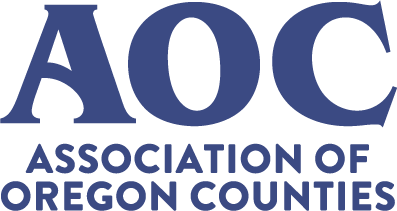
Mar 25, 2024 | AOC Business Partner
Sponsored content contributed by AOC Business Partner: Nationwide
Nationwide provides complimentary education sessions through their Teaching Thursday Program designed to help you prepare for retirement. Check out the upcoming sessions below and register here.
Upcoming Teaching Thursday Sessions
April 11
Myths & Retirement: What are the ten biggest myths concerning retirement savings? This webinar reviews the truths about these myths to help you confidently plan for retirement.
April 25
Managing Taxes: Learn how taxes can impact retirement income plans: pre-tax, post-tax, and inherited.
May 9
Leaving Your Legacy: Learn how to take steps to make sure your assets pass to your family and loved ones. Learn how these steps can pass smoothly, in a tax-efficient manner.
May 23
Retirement 101: This webinar helps employees better understand how and why a 457b Deferred Comp plan helps meet their retirement goals.
June 6
My Interactive Retirement Planner (MIRP) & Online Resources: Learn about tools, like MIRP and other online resources designed to organize and track your retirement goals.
June 20
Retirement Payout Options: If you are within a few months or years from retirement, you will learn all about distribution options and required minimum distributions.
Contributed by: Member Services and Education Director Kristen Paul

Apr 24, 2023 | AOC Business Partner
Portland State University (PSU) Center for Public Service Fellowships Program has recruited exceptionally qualified, trained, and diverse fellowship candidates from prestigious institutions throughout the U.S. to serve as project managers for Oregon’s public sector in 2023-24.
Our fellows provide skill capacity near-term to ensure critical projects are completed, despite staffing constraints. Candidates are prepared to support counties in areas such as research and analysis, community engagement, program evaluation, and so much more.
The Hatfield Resident Fellowship (program cost: $45,200) is an eight-month commitment for recent Master’s and Ph.D. graduates. The Oregon Summer Fellowship (cost: $11,030) is a 10-week program designed to accommodate currently enrolled graduate students.
Our applicants are screened rigorously and have a strong record of scholarship and demonstrable interest in areas including climate policy, health equity, public administration, and beyond.
There have been multiple fellowship projects sponsored by counties in recent years. Seeking to develop succession plans for key positions within their organization, a county contracted with PSU for an Oregon summer fellow to assist with a review of best practices, the development of new institutional relationships, and an update to the county’s workforce processes. Ultimately, the fellow provided a significant value-add in developing recommendations for the county’s planning.
Separately, an Oregon county identified a need to implement a review of fee practices within their internal business operations. Requirements included a review of organizational structure, service levels, and quality control and assurance. By conducting interviews with managers, aggregating the data, and developing an effective dashboard system, the fellow supported the county’s efforts to improve programmatic efficiency.
Our fellowships are an excellent opportunity for your county to gain support for important projects while also providing an opportunity for individuals interested in public service to gain valuable work experience. Our matching process includes an initial candidate identification, a series of interviews, and ultimately a match. From there, PSU will assist in completing an inter-governmental agreement and the training of your new fellow prior to their project start date.
Those interested in learning more about the sponsor process are encouraged to visit our website (click link) or submit a sponsor application (click link). Alternatively, please contact Meaghan Lingo, program administrator (mlingo@pdx.edu), or our office account (psfellows@pdx.edu) with any questions.
Contributed by: The Center for Public Service Fellowships team.
*Sponsored content provided by AOC Business Partner.

Apr 24, 2023 | AOC Business Partner
Recently, Amazon announced an agreement with Umatilla Electric Cooperative (UEC), the electric cooperative that serves Amazon Web Services (AWS) in Umatilla and Morrow counties. This agreement creates an innovative solution that safely and reliably powers data centers in the region and keeps Amazon on a path to achieving 100 percent renewable energy by 2025.
The agreement allows Amazon to take on the responsibility of selecting the energy supply that powers its data center operations, including from renewable energy resources. UEC continues to be an essential partner and provider of reliable utility service to AWS data centers in UEC’s service territory. Amazon’s energy supply from its utilities, combined with its renewable energy procurement across the United States, has enabled several AWS data center regions — including its U.S. West (Ore.) Region—to be powered with at least 95 percent renewable energy.
“We’re proud of our work in Oregon, and this new agreement with Umatilla Electric Cooperative is the latest example of how we’re working closely with the community. In addition to AWS investing over $15 billion in the state economy since 2011, and recycling up to 96 percent of AWS cooling water to provide millions of gallons of water to local farmers each year, we’re now able to directly invest in renewable energy across the Pacific Northwest to help power AWS operations in Oregon. We’re grateful for the collaboration with UEC, which will help us stay on a path to meeting 100 percent renewable energy by 2025,” said Charley Daitch, director of Energy and Water at AWS.
Historically, utilities have been responsible for sourcing an energy supply for their customers. To enable a faster transition to renewable energy, Amazon has been innovating by working with utilities to directly bring new wind and solar projects onto the grid.
Amazon has been the world’s largest corporate buyer of renewable energy every year since 2020 — sending a demand signal that also helps to further increase supply. Amazon is committed to reaching net-zero carbon by 2040 and is on a path to powering its operations with 100 percent renewable energy by 2025. As of today, Amazon has already reached more than 85 percent renewable energy globally across its offices, fulfillment centers, stores, and AWS data centers.
Contributed by: Amazon Staff
*Sponsored content provided by AOC Business Partner.

Mar 21, 2023 | AOC Business Partner
Tekniam’s Remote Universal Communication System (RUCS) is a compact rapidly deployable wireless broadband network empowering emergency responders and providing rural broadband internet in areas with little to no service.
JOHN DAY, Ore. (PRW) March 14, 2023 — Tekniam has provided Grant County, Oregon with the latest proprietary breakthrough in wireless communications. The Remote Universal Communication System, or RUCS broadband network, can be set up in minutes to operate anywhere. The Grant County RUCS project was funded through a U.S. Department of Homeland Security grant awarded late last year.
Grant County located in east-central Oregon, is one of the most rural, isolated counties in the lower 48 United States. The county is larger than some states, yet it averages only 1.6 people per square mile. Outside its small towns, the terrain is vast and often hard to reach. Its deeply eroded and arid topography is marked by many box canyons with steep walls. This has made providing Grant County with rural broadband internet especially challenging – until now!
The RUCS breakthrough technology is compact, easy to hand-carry, and sets up in minutes. This compares with previous technology many times its size at a higher cost to buy, transport, and operate. Starting at five pounds, or 2.2 kg, it has a very low five-to-eight-watt power draw, much lower than any of its competitors. Yet it transmits a powerful signal up to three miles to a distribution point. It can serve up to 250 Wi-Fi users within a 1000-ft radius. It simply needs an Internet signal and a power source, that can be AC, DC, or solar.
While former solutions required large equipment that had to be transported in a truck or trailer and continuous gasoline to operate, RUCS is truly revolutionary making possible exciting new opportunities with a wireless internet network that can be hand carried and set up anywhere.
Grant County Sheriff Todd McKinley has the ongoing issue of finding and rescuing missing persons. The county hosts the spectacular John Day Fossil Beds National Monument. Every year fossil hunters, hikers, and game hunters regularly become lost or go missing. These vast empty spaces require search and rescue teams to be sent out to find them.
Sheriff McKinley and his Office of Emergency Management immediately grasped the capability to set up an internet-anywhere field emergency command post with an easy-to-carry, lightweight RUCS off-grid network. First responders, including fire fighters, need up-to-date weather and situational updates with images that only broadband internet can provide.
“We are fortunate to now have a RUCS unit on hand. The capabilities that it can provide will aid in a variety of events that can occur. Having the RUCS pre-staged in our county will save hours of response time for equipment that would otherwise need to be shipped in from hundreds of miles away during a crisis. And that time can add up to the difference in saving lives, or not.”
RUCS makes exciting new capabilities for search and rescue operations. An internet signal can be beamed from the high walls of the box canyons. It can be titled “Missing Persons Network” that lost hikers with cell phones can receive. They can send messages with location and condition that search and rescue teams can receive in real time with an internet connection.
Grant County officials compared RUCS with the competition and had seen that, for the cost of a competitor’s single unit, an entire constellation of RUCS units could be acquired. Tekniam’s patented antenna technology is the enabling technology that makes RUCS able to support 10 to 15 “hops,” with a distance of up to 30 to 35 miles.
This initial installation provides the core building blocks for Grant County to create a comprehensive base camp for distributed emergency and disaster response, as well as rural broadband internet coverage county-wide.
###
About Grant County Emergency Management
Located in John Day, Ore., the Office of Emergency Management has the mission to provide the organized analysis, planning, decision-making, and assignment of available resources to protect from, mitigation of, prepare for, respond to, and recover from the effects of all hazard emergencies and disasters within Grant County. Read about it at https://grantcountyoregon.net/182/Emergency-Management.
About Tekniam
Headquartered in Lenexa, KS, Tekniam was founded in 2021 to bring connectivity to the most remote locations in the world. Products are made and assembled in the United States.
Learn more at Tekniam.com.
Contributed by: Tim Stranahan | Tekniam Chief Operations Officer
*Sponsored content provided by AOC Business Partner.

Mar 21, 2023 | AOC Business Partner
With the new year underway, for many it’s a good time to set both personal and professional goals. One goal that should make the list is ensuring that county employees always receive training each year. An effective training program can help employees and their supervisors be more successful in their roles — and help promote compliance with policies and procedures.
For many counties, assigning and tracking training can be difficult. Annual training requirements can range from a mandatory bloodborne pathogens course for some staff to a required cyber security or sexual harassment training for all staff. Creating an annual training plan provides a structure for employee development throughout the year. It also enables counties to review progress at desired intervals.
With that in mind, here are a few steps to take for a successful 2023.
- Identify Required Training for Staff
The first step in creating a learning plan is to identify required training. This includes training required by law, by contractual obligations, or by organization. Be sure to think about training for both new hires as well as existing employees — CIS can help set up training plans for both.
There’s no such thing as “one size fits all” when it comes to the learning initiatives that are important to CIS members. The 108 customized plans in the CIS system are composed of 192 different courses. They range from just one course on the plan to over 30! Some of the most common we see include:
- Bloodborne Pathogens;
- Cyber Security Basics;
- Preventing Discrimination and Harassment;
- Distracted Driving;
- Valuing Diversity; and
- Personal Protective Equipment.
- Decide How Often Staff Should Take Training
Training can be set at the beginning of the year, and can be automatically assigned to staff at any desired interval. Receiving five required training courses in March can seem daunting, but plans can be set to assign one per month or quarter. In addition, reports can be set to alert staff monthly, quarterly, or annually to show completed courses as well as those who have outstanding assignments.
- Contact the CIS Learning Center for Help
Once county staff have identified what training is required and how often employees should receive it, the final step is setting up a training plan in the CIS Learning Center. Each plan is highly customized to meet each member’s specific needs.
A customized learning plan allows one to choose which courses to include, set due dates or recurrence intervals, and automate assignments, if desired. CIS can also include items such as internal policies or new hire packet documents for online review along with electronic acknowledgments and tracking reports. There are many custom options available and the CIS team is happy to help find just the right mix to meet a county’s needs.
Contributed by: Bill LaMarche | CIS Public and Member Relations Manager
*Sponsored content provided by AOC Business Partner.





